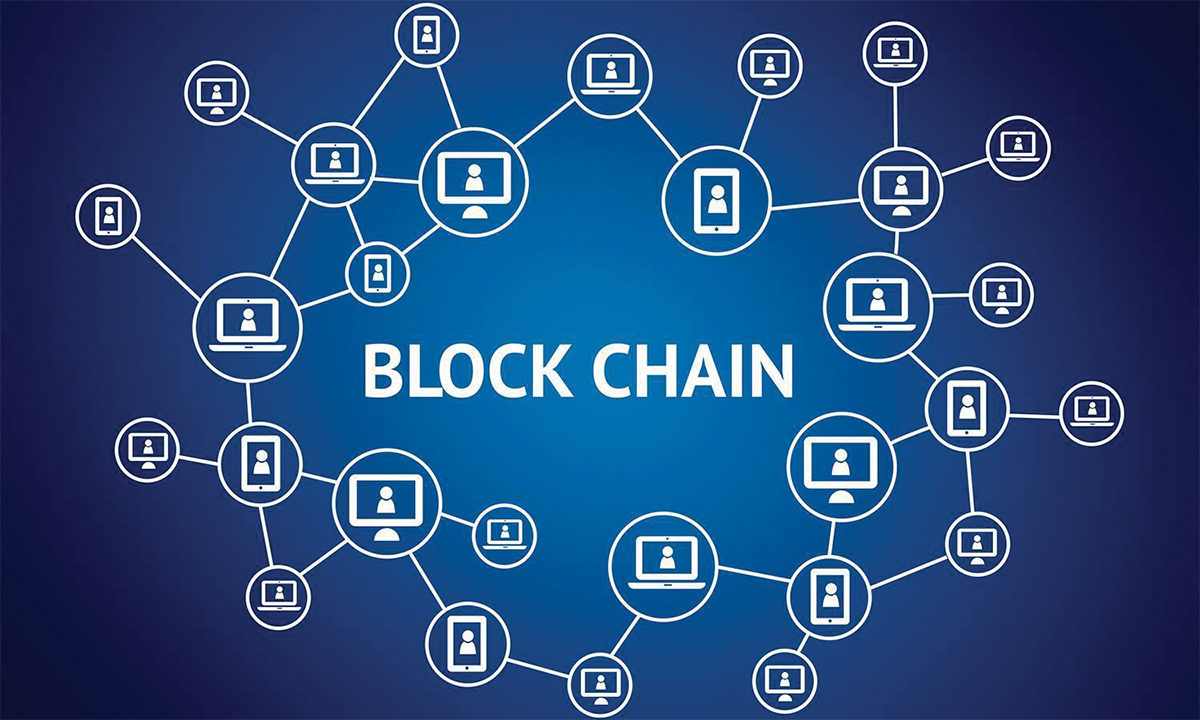
Understanding Blockchain Technology and Its Applications
- Ankush Chudiwal
- Blockchain , Technology , Cryptography
- 26 Oct, 2024
What is Blockchain?
Blockchain is a decentralized, distributed ledger technology that securely records transactions across multiple computers in a network. Each transaction is stored in a block, and once a block is filled with data, it is linked to the previous block, forming a chain. This structure ensures that once data is entered, it cannot be altered or tampered with, making blockchain highly secure and immutable.
Blockchain technology is the backbone of cryptocurrencies like Bitcoin and Ethereum, but its potential extends far beyond finance. It’s used for supply chain management, voting systems, smart contracts, and more, revolutionizing how data is handled across industries.
How Blockchain Works
Blockchain technology operates through a series of key steps that ensure its security, transparency, and decentralized nature:
-
Decentralization:
- Unlike traditional databases that are controlled by a central authority, blockchain operates on a network of computers (nodes). Each node maintains a copy of the blockchain, ensuring transparency.
-
Consensus Mechanism:
- Transactions are validated by network participants using algorithms such as Proof of Work (PoW) or Proof of Stake (PoS). These mechanisms allow the network to agree on the validity of transactions without needing a central authority.
-
Immutability:
- Once data is recorded on the blockchain, it cannot be altered or deleted. This feature makes blockchain an ideal solution for industries where data integrity and security are paramount.
-
Encryption and Security:
- Blockchain employs cryptographic hashing to secure data. Each block contains a unique hash and the hash of the previous block, ensuring that any alteration in a block would invalidate the entire chain.
Applications of Blockchain
Blockchain technology has found applications across a wide array of industries, transforming traditional processes with its decentralized and secure structure:
1. Cryptocurrencies and Digital Assets
- Bitcoin, Ethereum, and other digital currencies operate on blockchain networks, allowing secure, peer-to-peer transactions without intermediaries like banks. Blockchain also powers the creation and exchange of NFTs (Non-Fungible Tokens), digital assets that are unique and cannot be replicated.
2. Smart Contracts
- Smart contracts are self-executing contracts with the terms of the agreement directly written into code. Platforms like Ethereum allow the creation of decentralized applications (dApps) that automate tasks like payments, insurance claims, and more.
3. Supply Chain Management
- Blockchain improves transparency in the supply chain by providing an immutable record of each step in the production and distribution process. This helps in verifying the authenticity of products and ensuring ethical sourcing.
4. Healthcare
- In healthcare, blockchain ensures secure and tamper-proof records of medical data, allowing for better data sharing between providers while maintaining patient privacy.
5. Voting Systems
- Blockchain offers a secure, transparent, and tamper-proof way to conduct elections. Voters can cast their ballots securely, and the results are verifiable by anyone without compromising voter privacy.
Blockchain: Strengths and Challenges
While blockchain presents groundbreaking innovations, it also faces certain challenges that need to be addressed for widespread adoption.
Strengths:
- Decentralization: Eliminates the need for intermediaries and reduces the risk of single points of failure.
- Security: Blockchain’s cryptographic features make it one of the most secure ways to store and transfer data.
- Transparency: All transactions on a blockchain are publicly accessible, ensuring full transparency.
- Automation: Through smart contracts, blockchain enables automated processes that reduce time and costs.
Challenges:
- Scalability: Public blockchains often face challenges in handling large numbers of transactions per second, leading to slower processing times.
- Energy Consumption: Consensus mechanisms like PoW require significant computational power, resulting in high energy consumption.
- Regulation: The decentralized nature of blockchain complicates its regulation, especially in areas like finance where legal compliance is crucial.
- Interoperability: Many blockchain networks operate independently, and there’s a need for better interoperability between different blockchains.
Future Trends in Blockchain
Blockchain continues to evolve, with new trends shaping the future of the technology:
-
Scalability Solutions:
- Technologies like Layer 2 solutions (e.g., Lightning Network) and sharding are being developed to enhance blockchain scalability, allowing networks to handle more transactions without compromising speed.
-
Cross-Chain Interoperability:
- Future blockchains will focus on seamless communication between different networks, enabling a more connected ecosystem of decentralized applications.
-
DeFi (Decentralized Finance):
- Decentralized finance platforms are emerging, providing financial services like lending, borrowing, and trading without relying on traditional financial institutions.
-
Green Blockchain Solutions:
- With the rise of environmental concerns, Proof of Stake (PoS) and other energy-efficient consensus algorithms are being prioritized to reduce blockchain’s carbon footprint.
-
Blockchain in Government Services:
- Governments are exploring blockchain for land registries, identity verification, and other services to enhance transparency and reduce corruption.
Building Your Own Blockchain Application
If you’re interested in developing blockchain applications, here are some basic steps to follow:
Step 1: Install Dependencies
To build blockchain applications, you will need to install development frameworks like Truffle or Hardhat for Ethereum development.
npm install -g truffle
npm install -g hardhat
Step 2: Set Up a Blockchain Environment
Set up a local blockchain network for development using Ganache or connect to an Ethereum test network like Ropsten.
# Install Ganache for a local blockchain environment
npm install -g ganache-cli
Step 3: Write a Smart Contract
Write a simple Solidity smart contract that automates a basic task, such as a token transfer or a voting system.
pragma solidity ^0.8.0;
contract SimpleStorage {
uint256 storedData;
function set(uint256 x) public {
storedData = x;
}
function get() public view returns (uint256) {
return storedData;
}
}
Step 4: Deploy Your Contract
Deploy your smart contract to the blockchain and interact with it using JavaScript frameworks like web3.js or ethers.js.
truffle migrate --network ropsten
Conclusion
Blockchain technology is a transformative force, reshaping industries with its decentralized, secure, and transparent nature. While challenges like scalability and regulation remain, the future of blockchain is bright with innovations like DeFi, green blockchains, and cross-chain interoperability leading the way.
The key to harnessing blockchain’s full potential lies in understanding its applications, strengths, and limitations, and staying updated with the rapid advancements in the field.
For more insights on blockchain development and emerging technologies, stay connected with Krishna-Blogs!
GitHub Repo — For reference
Contact: ankushchudiwalwit@gmail.com or snakesnnetworks@gmail.com

